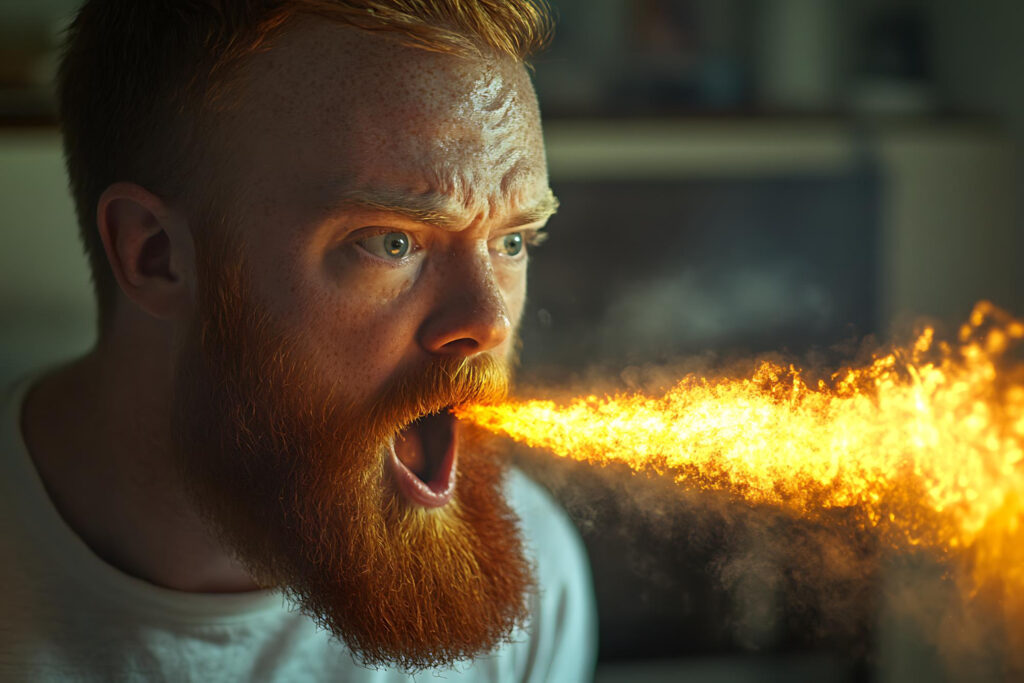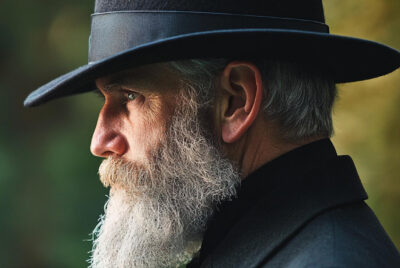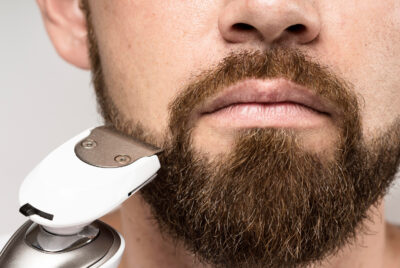Science Behind Beard Growth
Have you ever stroked your beard (or someone else’s) and wondered about the fascinating biological processes happening beneath the surface? The science behind beard growth reveals an intricate dance of hormones, genetics, and cellular activity that transforms bare skin into a magnificent display of facial hair.
The Hormonal Orchestra: Testosterone and DHT Take Center Stage
At the heart of beard growth lies a powerful duo of hormones that orchestrate the entire process. Testosterone, often called the king of male hormones, initiates the journey. But it doesn’t work alone. Through a remarkable biological transformation, testosterone converts into dihydrotestosterone (DHT) via an enzyme called 5-alpha reductase.
Think of DHT as testosterone’s more potent cousin – when it binds to androgen receptors in your facial hair follicles, it triggers a cascade of events that transform thin, light vellus hairs into the thick, commanding terminal hairs that make up your beard. The strength of this hormonal influence explains why beard growth typically explodes during puberty when testosterone levels surge.
Genetics: Your Facial Hair Blueprint
While hormones provide the fuel, your genes create the foundation for beard growth. Your genetic code contains specific instructions that determine everything from your beard’s density to its distribution pattern. The Androgen Receptor (AR) gene plays a particularly crucial role – it’s like a lock that hormones need to fit into to stimulate growth.
This genetic blueprint explains why some men can grow full beards within weeks, while others might struggle to develop more than patches even after months of trying. It’s not just about having the right hormones; your follicles need to be genetically programmed to respond to them effectively.
The Three-Act Play of Hair Growth Cycles
Your beard performs an ongoing cycle of growth, rest, and renewal through three distinct phases:
The Anagen Phase: The Growth Sprint
During this active growth phase, which can last several years, your facial hair follicles are busy producing new hairs. This period determines how long your beard can potentially grow – think of it as your beard’s marathon running phase.
The Catagen Phase: The Transition Period
This brief but crucial transitional phase signals the follicle to stop producing hair. It’s like a mini intermission where your follicles prepare for their next performance.
The Telogen Phase: The Resting Stage
During this final phase, old hairs shed to make way for new growth. It’s your beard’s way of ensuring continuous renewal and maintaining healthy growth patterns.
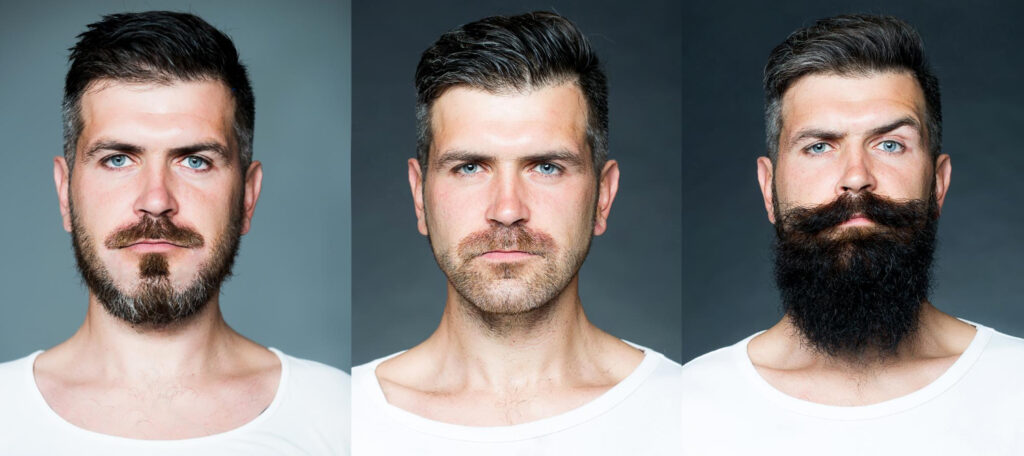
Beyond Biology: Environmental Factors That Shape Your Beard
While genetics and hormones set the stage, various external factors can influence your beard’s performance:
Age: The Timeline of Growth
Your beard’s growth potential follows a natural timeline. It typically begins during puberty, reaches its peak performance in your late twenties or early thirties, and may gradually change as you age further.
Nutrition: Feeding Your Facial Hair
Your beard requires proper nutrition to thrive. Essential nutrients include:
- Biotin for hair strength
- Protein for hair structure
- Vitamins A, C, and E for follicle health
- Zinc and iron for promoting growth
Lifestyle Factors: The Daily Impact
Your daily habits can significantly affect beard growth. Stress management, adequate sleep, and regular exercise all contribute to creating optimal conditions for facial hair development.
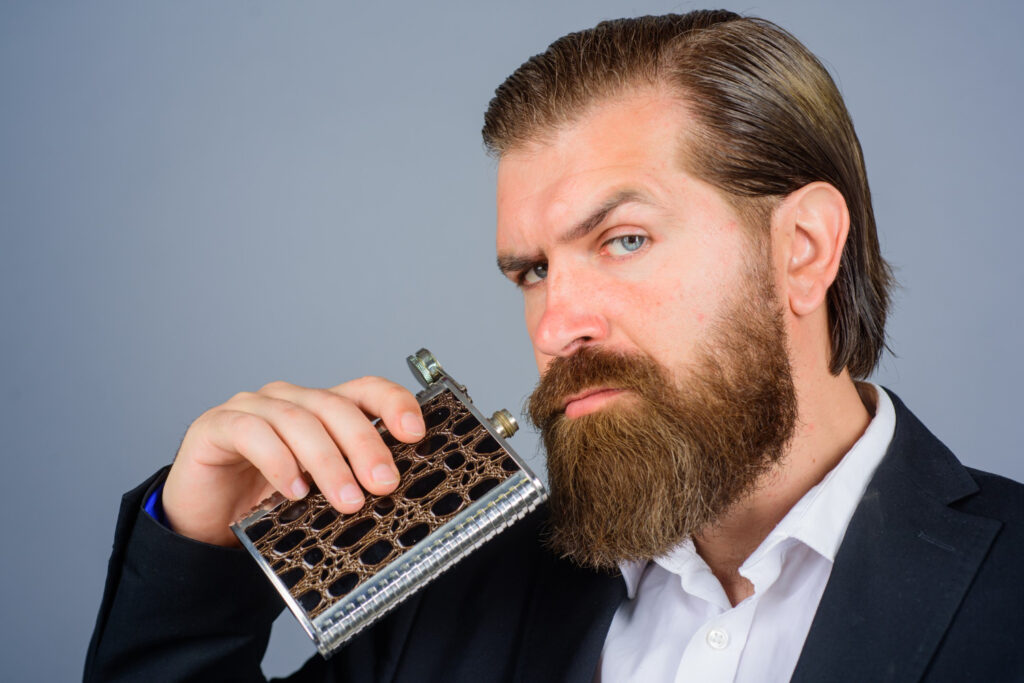
The Science of Beard Care: Maximizing Your Growth Potential
Understanding the science behind beard growth allows you to make informed decisions about beard care. Regular cleansing helps maintain healthy follicles, while proper moisturizing prevents dryness and brittleness. Gentle exfoliation can help prevent ingrown hairs by keeping follicles clear.
Embracing Your Unique Beard Journey
The science behind beard growth reveals why every man’s facial hair journey is unique. Your beard is a personal expression of your genetic heritage, hormonal balance, and overall health. Whether you’re sporting a full Viking beard or a more modest growth, understanding these biological processes helps you appreciate the complexity behind every strand.
The Future of Beard Science
As our understanding of the science behind beard growth continues to evolve, researchers are uncovering new insights into factors affecting facial hair development. From studying the role of micronutrients to investigating novel growth stimulation methods, the field of beard science remains an active area of research.
Remember, while you can’t change your genetic predisposition, you can optimize your beard’s growth potential by maintaining good health, following a nutrient-rich diet, and developing a proper care routine. Your beard is a testament to the remarkable complexity of human biology, worthy of both scientific study and personal pride.


